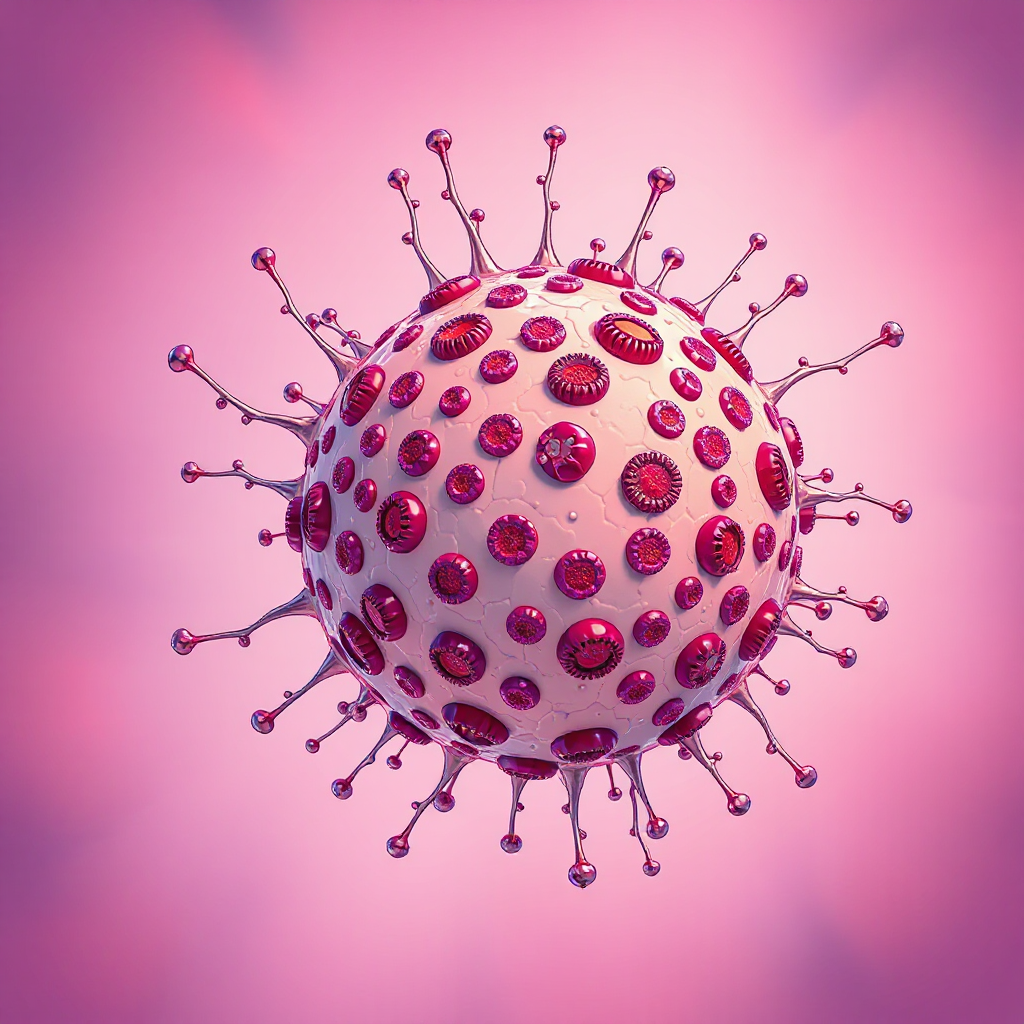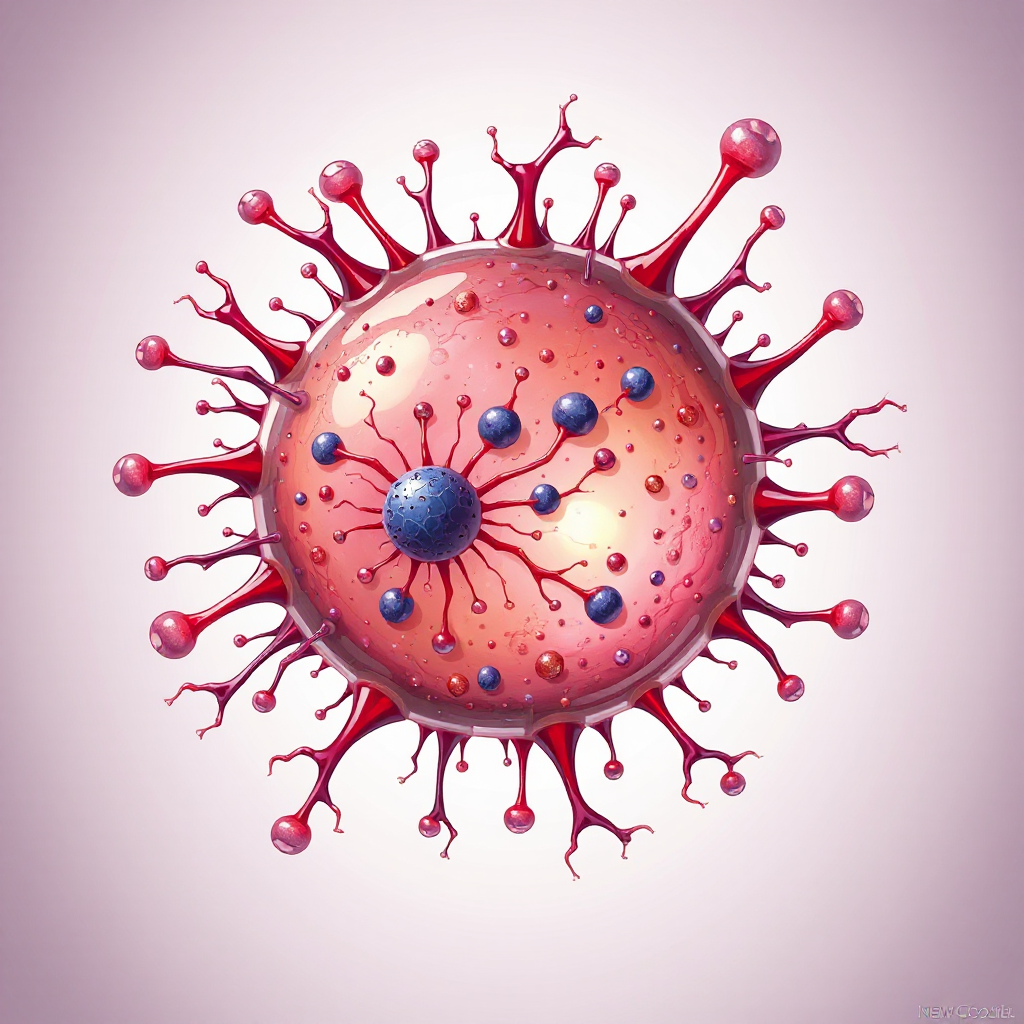Understanding Primary Cutaneous Immunocytoma and Its Classification

Primary cutaneous immunocytoma is a rare type of low-grade malignant B-cell lymphoma that appears on the skin. You might notice it as clustered erythematous brown papules, often on the arms or legs. This condition falls under the category of primary cutaneous B-cell lymphomas, which are distinct from systemic lymphomas. Its clinical importance lies in its association with autoimmune diseases like Sjögren's syndrome and hepatitis C. Fortunately, treatments such as local irradiation or Rituximab often lead to excellent outcomes, with most cases showing a favorable prognosis.
Key Takeaways
Primary cutaneous immunocytoma is a rare skin cancer. It shows up as small brown bumps, mostly on arms and legs. Finding it early helps with better treatment.
Doctors use tissue tests to diagnose it. They check for plasma cells around blood vessels and look for markers like CD20 and light chain patterns.
Local treatments, like radiation and Rituximab, work very well. Most people get much better with these treatments.
The outlook for this condition is usually good if the bumps stay in one area. Regular check-ups are important to watch for changes.
Diseases like Sjögren's syndrome and hepatitis C can cause this condition. Knowing this helps doctors find out who might be at risk.
What Is Primary Cutaneous Immunocytoma?

Definition and Characteristics
Primary cutaneous immunocytoma is a rare type of low-grade malignant B-cell lymphoma that originates in the skin. It often presents as clustered erythematous brown papules, typically appearing on the arms or legs. These lesions may be solitary or localized, with most cases responding well to local treatments like radiation therapy. Histologically, the condition features nodular or diffuse infiltrates of monotypic lymphoplasmacytoid or plasma cells, often concentrated at the periphery. Immunohistochemical analysis reveals the expression of markers such as CD2, CD3, and CD5. Under the microscope, you might notice perivascular small lymphocytic and plasmacellular infiltrates, which can mimic a reactive process.
Epidemiology and Prevalence
This condition affects both men and women, typically between the ages of 43 and 76. A study of 16 patients with primary cutaneous immunocytoma showed that 13 had solitary or localized skin lesions, while 15 exhibited lesions on the arms or legs. The disease is rare, but it has a favorable prognosis when diagnosed and treated early.
Gender | Age Range |
|---|---|
Men | 43 - 76 |
Women | 43 - 76 |
Pathogenesis and Etiology
The development of primary cutaneous immunocytoma involves immune dysregulation and, in some cases, viral infections. Conditions like Sjögren's syndrome, rheumatoid arthritis, and autoimmune thyroid disease have been linked to this lymphoma. Viral infections, such as hepatitis C, also play a role. EBER staining of plasma cells and the presence of hepatitis C RNA transcripts suggest a connection between viral activity and the disease. Additionally, the marginal zone lymphoma phenotype observed in these cases points to specific cellular mechanisms driving the condition. Medications that affect immune function may also contribute to its onset.
Classification of Primary Cutaneous Immunocytoma
WHO-EORTC Classification System
You might wonder how experts classify primary cutaneous immunocytoma. The WHO-EORTC classification system places it under primary cutaneous marginal zone B-cell lymphoma (PCMZL). This group includes indolent lymphomas made up of small B cells, such as marginal zone cells and plasma cells. By using this system, doctors can better distinguish between different types of cutaneous lymphomas. It also helps them identify whether a lymphoma is indolent or aggressive, which is crucial for choosing the right treatment.
The WHO-EORTC system improves diagnostic accuracy by:
Providing a clear framework for identifying cutaneous lymphomas.
Differentiating between slow-growing and fast-progressing forms.
Supporting better clinical decisions for treatment strategies.
Subtypes and Their Features
Primary cutaneous immunocytoma has unique subtypes with distinct features. The most common histological pattern includes perivascular small lymphocytic and plasmacellular infiltrates. These often resemble a reactive process, making diagnosis challenging. Phenotypic studies reveal a marginal zone lymphoma (MZL) phenotype, which includes atypical lymphocytic infiltrates surrounded by non-neoplastic T and B cells. Plasma cells in these subtypes often show light chain restriction, a key diagnostic marker.
Feature | Primary Cutaneous Immunocytomas | Secondary Cutaneous Immunocytomas |
|---|---|---|
Infiltrate Type | Nodular or diffuse with monotypic plasma cells | Diffuse or dispersed plasma cells throughout |
Clinical Presentation | Widespread skin disease, often with paraproteins | |
Response to Treatment | Excellent response to local therapies | Variable, often less favorable |
Role of Histology and Immunophenotyping
Histology and immunophenotyping play a vital role in classifying primary cutaneous immunocytoma. When you examine tissue samples, you’ll notice perivascular small lymphocytic and plasmacellular infiltrates. These findings help differentiate this condition from other skin lymphomas. Immunophenotyping further confirms the diagnosis by identifying a marginal zone phenotype. Monotypic plasma cells, revealed through histological analysis, are another critical feature. Together, these tools ensure accurate classification and guide effective treatment planning.
Clinical Features

Skin Lesions and Presentation
When primary cutaneous immunocytoma affects the skin, you may notice distinct lesions. These often appear as clustered erythematous brown papules, primarily on the arms and legs. In most cases, the lesions are solitary or localized, presenting as pink-violet to red-brown papules, plaques, or nodules. Their appearance can vary slightly, but they tend to remain confined to specific areas rather than spreading widely.
Common characteristics of these lesions include:
Clustered erythematous brown papules.
Pink-violet to red-brown plaques or nodules.
A preference for the extremities, especially the arms and legs.
These features make the condition easier to identify during a physical examination. However, further diagnostic tools are often needed to confirm the diagnosis.
Histological and Immunophenotypic Markers
To diagnose primary cutaneous immunocytoma, doctors rely on histological and immunophenotypic markers. When you examine tissue samples, you’ll find nodular or diffuse infiltrates of monotypic lymphoplasmacytoid or plasma cells. These cells often cluster around blood vessels, creating a perivascular pattern.
Key markers used in diagnosis include:
CD2, CD3, CD5, CD20, CD21, CD23, CD43, CD56, CD79, and bcl-2.
Light chain restriction among plasma cells.
Monotypic plasma cells or lymphoplasmacytoid cells.
These markers help distinguish this condition from other types of cutaneous lymphomas. The presence of light chain restriction and monotypic plasma cells is particularly important for confirming the diagnosis.
Common Sites of Involvement
Primary cutaneous immunocytoma typically affects the extremities. You’ll often find lesions on the arms and legs, where they remain localized. This pattern of involvement sets it apart from other lymphomas that may spread more diffusely across the body.
By focusing on these common sites, doctors can narrow down potential diagnoses and proceed with targeted testing. The localized nature of the lesions also contributes to the favorable prognosis seen in most cases.
Differential Diagnosis
Distinguishing From Other Cutaneous B-Cell Lymphomas
When diagnosing primary cutaneous immunocytoma, you must differentiate it from other cutaneous B-cell lymphomas (CBCLs). Each subtype of CBCL has unique clinical and histological features that guide diagnosis.
Key differences between primary cutaneous immunocytoma and other CBCLs include:
Lesion distribution: Immunocytomas typically present as solitary or localized lesions, often on the arms and legs.
Histological features: These lymphomas show nodular or diffuse infiltrates of monotypic lymphoplasmacytoid or plasma cells, often at the periphery.
Prognosis: Immunocytomas respond well to local treatments and have a favorable prognosis.
Disease spread: Unlike secondary cutaneous immunocytomas, primary forms remain confined to the skin without systemic involvement.
Primary cutaneous B-cell lymphomas, as a group, vary in their behavior and prognosis. For example, some subtypes may present as widespread nodules, while others remain localized. Recognizing these distinctions helps you narrow down the diagnosis and choose the most effective treatment.
Differentiation From Reactive Lymphoid Hyperplasia
Reactive lymphoid hyperplasia (RLH) can mimic primary cutaneous immunocytoma, but several features help you distinguish between the two.
Primary cutaneous immunocytoma:
Presents as clustered erythematous brown papules, often on extremities.
Histology reveals perivascular small lymphocytic and plasmacellular infiltrates.
Monotypic plasma cells or lymphoplasmacytoid cells are present.
Phenotypic studies show a marginal zone lymphoma phenotype with light chain restriction.
A reactive background population of non-neoplastic T and B cells is often observed.
Reactive lymphoid hyperplasia:
Lacks monotypic plasma cells or light chain restriction.
Does not exhibit the nodular or diffuse infiltrates characteristic of immunocytoma.
Typically resolves without treatment and does not show malignant features.
By focusing on these differences, you can avoid misdiagnosis and ensure appropriate management.
Diagnostic Tools and Techniques
Accurate diagnosis of primary cutaneous immunocytoma relies on a combination of histological and immunohistochemical techniques.
Histological examination: Tissue samples reveal nodular or diffuse infiltrates of monotypic lymphoplasmacytoid or plasma cells. These cells often cluster around blood vessels, creating a perivascular pattern.
Immunohistochemistry: Key markers include CD5, CD20, CD79a, CD21, bcl-2, and kappa- and lambda light chains. Light chain restriction among plasma cells is a critical diagnostic feature.
Phenotypic studies: These confirm the marginal zone lymphoma phenotype, helping differentiate immunocytoma from other CBCLs and reactive conditions.
Using these tools, you can confidently identify primary cutaneous immunocytoma and rule out other conditions with similar presentations.
Management and Prognosis
Treatment Approaches
When managing primary cutaneous immunocytoma, you have several effective treatment options. Local therapies, such as irradiation, often lead to excellent outcomes. Rituximab, a monoclonal antibody targeting CD20, has also shown remarkable success in resolving lesions. These treatments are particularly effective for solitary or localized skin lesions.
Treatment Option | Effectiveness |
|---|---|
Local irradiation | Resulted in lesional resolution |
Rituximab | Resulted in lesional resolution |
Emerging therapies continue to focus on enhancing these outcomes. Studies involving patients with compatible lesions have demonstrated consistent success with these approaches. By choosing the right treatment, you can achieve significant improvement in most cases.
Prognostic Factors
Several factors influence the prognosis of primary cutaneous immunocytoma. The type of lymphoma plays a critical role, as primary cutaneous marginal zone B-cell lymphoma typically has a better prognosis than systemic forms. Plasmacytic differentiation, however, may indicate a more aggressive disease.
Other key factors include:
The extent of disease at diagnosis, with extramedullary spread linked to poorer outcomes.
The response to treatment, which often determines long-term success.
By addressing these factors early, you can improve the likelihood of a favorable prognosis.
Long-Term Outcomes
The long-term outlook for primary cutaneous immunocytoma is generally positive. Most cases involve solitary or localized lesions, which respond well to local treatments. This localized nature contributes to the excellent prognosis seen in the majority of patients.
Key characteristics of long-term outcomes include:
A high rate of lesional resolution with local therapies.
A favorable prognosis when the disease remains confined to the skin.
In some cases, the condition may arise from reactive lymphoid hyperplasia, but early diagnosis and treatment ensure better outcomes. By focusing on localized management, you can help patients achieve lasting remission.
Primary cutaneous immunocytoma represents a rare but distinct subtype of primary cutaneous B-cell lymphomas. It falls under the broader category of primary cutaneous marginal zone B-cell lymphoma, characterized by small B cells, including marginal zone and plasma cells. Clinically, it often presents as solitary or localized erythematous brown papules on the arms or legs, with histological features like perivascular lymphocytic and plasmacellular infiltrates. These characteristics, along with its association with autoimmune diseases, highlight the need for precise diagnosis.
Accurate identification ensures effective management, as this condition responds well to local treatments like irradiation or Rituximab. However, gaps remain in understanding its etiology, particularly its links to immune dysregulation and associated conditions like Sjögren's syndrome. Future research should focus on these areas to optimize treatment strategies and improve long-term outcomes. By advancing our knowledge, you can help patients achieve better care and quality of life.
FAQ
What is the difference between primary and secondary cutaneous immunocytoma?
Primary cutaneous immunocytoma originates in the skin and remains localized. Secondary cutaneous immunocytoma spreads to the skin from systemic lymphoma. You can distinguish them through clinical presentation, histology, and immunophenotyping.
Can primary cutaneous immunocytoma spread to other organs?
No, it typically remains confined to the skin. This localized nature contributes to its favorable prognosis. However, regular follow-ups help ensure no systemic involvement develops over time.
How is primary cutaneous immunocytoma diagnosed?
Doctors use a combination of skin biopsy, histological examination, and immunohistochemistry. These tests identify key markers like CD20 and light chain restriction, confirming the diagnosis.
Is primary cutaneous immunocytoma curable?
Yes, most cases respond well to local treatments like radiation or Rituximab. Early diagnosis and treatment improve outcomes significantly, often leading to complete resolution of lesions.
Are there any risk factors for developing primary cutaneous immunocytoma?
Yes, autoimmune diseases like Sjögren's syndrome and hepatitis C infection increase your risk. Immune dysregulation also plays a role in its development.
See Also
Exploring Mycosis Fungoides: A Primary Skin Lymphoma
Cutaneous T-Cell Lymphoma: Symptoms and Overview
Large-Cell Lung Carcinoma: Insights and Classifications
